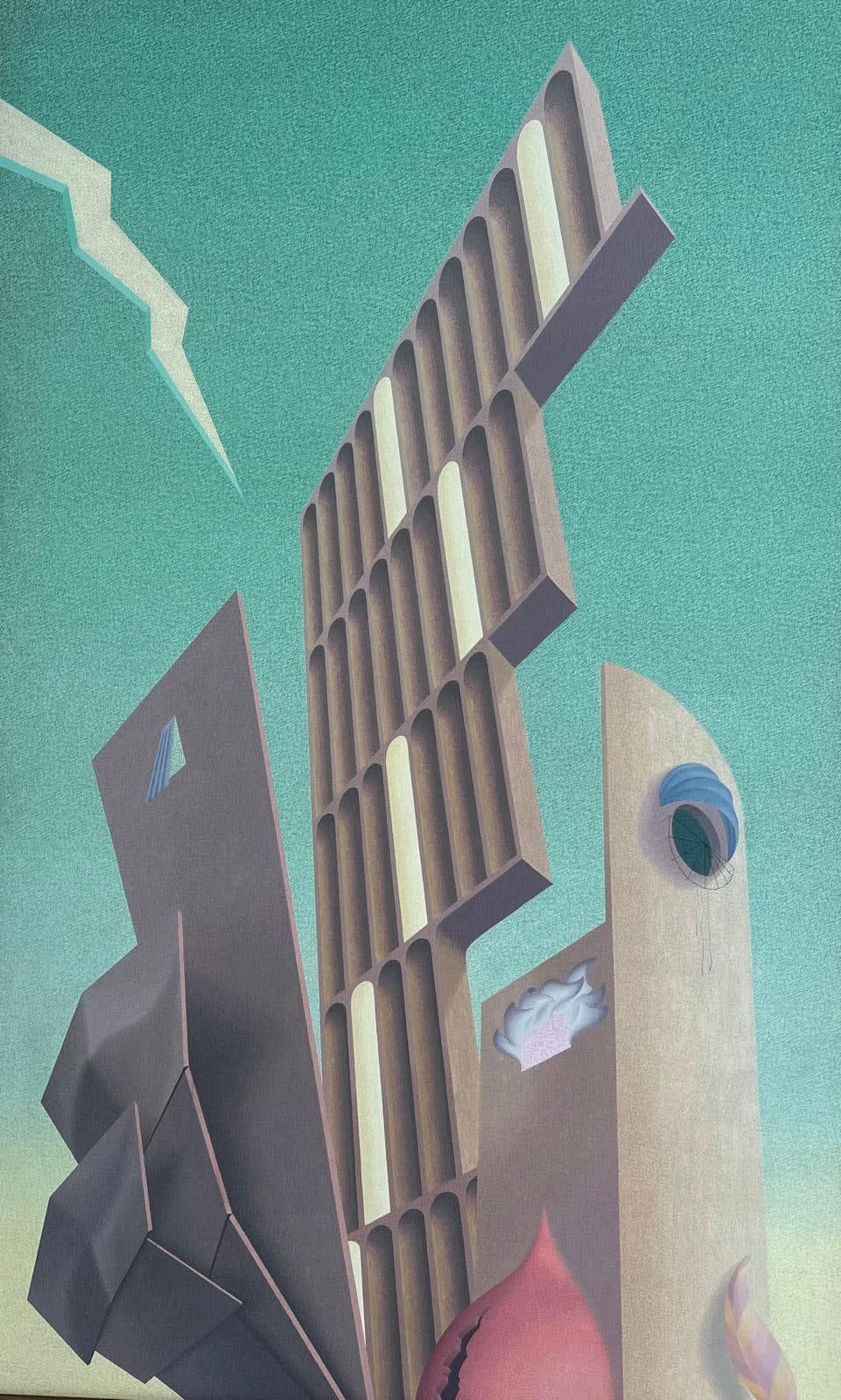Henry Orlik b. 1947
The End suggests an apocalyptic vision of a building being struck by jagged, stylised lightning and severed in two, so that like a pack of cards it falls, crashing outwards. The buildings are one wall thick with no insides although there is the suggestion of ‘life’ inside the buildings with pale yellow arches of light on one wall recreating the light that shines from windows from the interior of a building. The round window on the side of the curved building becomes a caricatured eye, with blue eye make-up and railings for lashes so that the building resembles a face in profile. The other window of that building has stylised grey-white, wave-like objects flying out of it, like curtains billowing out of a window or grey flames; pink brain/intestine-like organic matter is visible beneath the ‘flames’ suggesting an interior physical ‘body’. The left-hand section of the building collapses, ‘folding-up’ like origami, with a tall piece falling flat and other’s folding-up, like origami. This gives a suggestion of folds and layers of hair at the back of the head. One small, triangular window is visible at the top of this section. The segments of the building merge to form a head which is being struck by lightning which could be an inspirational idea or maybe a devastating concept which has occurred, or an internal threat strikes the head.
Although there is a suggestion of an ‘inside’ of the building/head, the inside is the same as the outside and does not really exist as a separate entity. Perhaps there is an imagined barrier which separates the inner and outer worlds of the mind. Only some of the lights (neurons/ideas) are turned on. As the philosopher Giorgio Agamben writes in When the House Burns Down: ‘the event of an outside, which is nevertheless not another place but, as in Kant’s definition of the thing-in-itself, a space that must remain absolutely empty, a pure exteriority. … the space whose borders the eye can peruse is also an opening that does not lead to any determinable place but faces the sky and dwells in a pure taking place’ (pp. 29-30, Giorgio Agamben, When the House Burns Down, ‘Door and Threshold’, 2022).
Perhaps Orlik had a premonition of world events and of a city’s collapse which also becomes the collapse of an individual and a civilisation when he painted The End. The organic arched rose-red ‘bud’/egg which is cracked open as if something has hatched from it suggests the release of something into the world. This and the striped feather at the bottom of the painting offer a suggestion that nature, after the destruction unleashed by mankind, will rise to reclaim the area.

